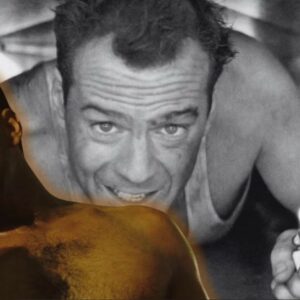Mary J. Blige, renowned for her powerful voice and profound lyrics, has always captivated audiences with her musical talent. Her seamless ability to translate raw emotion into song has earned her a permanent place in the annals of music history. Yet, in 2009, Blige ventured beyond her musical realm with a foray into film, starring in “Mary J. Blige: Just Fine.” This role was more than a mere acting gig; it was a significant challenge that tested her versatility and resilience. In this article, we explore the unique hurdles Blige faced in this cinematic journey, dissecting how her experience in the film reflects both her growth as an artist and the broader challenges of transitioning from music to acting.
Navigating the Transition from Music to Film
For artists like Mary J. Blige, moving from the recording studio to the silver screen is no small feat. The skills that make someone an exceptional musician—emotionally charged performances, vocal control, and stage presence—do not always translate seamlessly to the nuanced world of acting. Blige’s transition from music to film required her to adapt her craft in ways she had not previously encountered.
In “Mary J. Blige: Just Fine,” Blige stars as a fictionalized version of herself. The film’s plot revolves around a celebrated singer navigating the challenges of fame, personal relationships, and self-identity. While this role might seem like a natural extension of Blige’s real-life experiences, it posed significant acting challenges. Unlike live performances where emotional intensity is delivered through music, acting requires an additional layer of subtlety and nuance, which can be difficult for those more accustomed to the immediacy of musical expression.
Blige’s ability to transition from singing to acting was scrutinized, and her performance had to be convincing enough to bridge the gap between her established musical persona and her new cinematic identity. This was a challenge not just in terms of acting technique but also in how audiences perceived her. The expectations were high, and any deviation from the anticipated level of performance could have been met with skepticism.
Emotional Vulnerability and Authenticity
One of the most significant hurdles Blige faced in “Mary J. Blige: Just Fine” was maintaining emotional authenticity. Blige’s music is characterized by its deep emotional resonance, often drawn from personal experiences of struggle, pain, and triumph. Translating this raw emotional depth into acting requires not only a deep understanding of the character but also a willingness to expose oneself to a different form of vulnerability.
In the film, Blige’s character confronts various personal and professional challenges that mirror some of the struggles she has faced in her own life. However, portraying these issues on screen demanded a different approach from performing them in a song. The authenticity required in acting involves embodying the character’s experiences and emotions rather than simply expressing them. For Blige, this meant delving into her own emotional reserves in a new way, stripping away the safety net of musical performance to reveal a more personal, introspective side.
The Challenge of Public Perception
Blige’s transition from a music icon to an actress came with the challenge of managing public perception. Fans and critics alike had pre-existing notions of who Blige was based on her musical career. Her role in “Mary J. Blige: Just Fine” was not only a test of her acting skills but also a challenge to redefine how she was perceived by the public.
Critics often hold musicians who venture into acting to higher standards, sometimes driven by preconceived notions of their abilities. Blige had to confront these expectations head-on, navigating both the praise and criticism that came with her performance. This was compounded by the fact that her role was a fictionalized portrayal of herself, which meant that any shortcomings or missteps were seen as reflections of her true self rather than a character she was portraying.
Blige’s ability to handle the scrutiny and manage the expectations of both her fans and critics was crucial. She needed to find a balance between staying true to her artistic identity and meeting the demands of a different medium. This balancing act was not only about proving her acting chops but also about maintaining her credibility and staying authentic to her established persona.
Balancing Personal and Professional Challenges
“Mary J. Blige: Just Fine” also required Blige to navigate the personal challenges that come with integrating one’s personal life into a professional project. In the film, Blige’s character deals with issues of self-worth and public scrutiny—issues that are not unfamiliar to the singer herself. The overlap between Blige’s real-life experiences and her character’s journey added an additional layer of complexity.
Balancing personal insights with professional responsibilities posed a unique challenge. Blige had to draw from her own experiences while ensuring that her portrayal remained distinct and relatable to a wider audience. This involved a delicate dance between self-expression and artistic detachment, a challenge that is often magnified when one is playing a version of oneself.
The Impact of Directorial Vision
The role of director in shaping an actor’s performance cannot be underestimated. In “Mary J. Blige: Just Fine,” Blige worked under the direction of a filmmaker who had to guide her through the complexities of her role. The director’s vision played a crucial role in shaping Blige’s performance and ensuring that her portrayal was both compelling and authentic.
Blige had to adapt to the directorial style and expectations, which required flexibility and openness to feedback. The collaborative nature of filmmaking meant that Blige’s performance was not solely her own but was influenced by the director’s vision and guidance. This dynamic added another layer of complexity to her performance, as she needed to harmonize her artistic instincts with the director’s creative direction.
Overcoming the Physical Demands of Acting
Acting, especially in a film like “Mary J. Blige: Just Fine,” comes with its own set of physical demands. Unlike live performances where Blige could rely on the energy of the crowd and the rhythm of the music, acting required sustained energy and focus over longer periods. The physical demands of shooting scenes, often repeatedly, and maintaining the emotional intensity required a different kind of endurance.
Blige’s ability to handle these physical demands was crucial. The process of film acting involves long hours on set, often in challenging conditions, and requires a level of physical and mental stamina that is different from performing on stage. For Blige, adapting to this aspect of acting was a significant challenge, one that tested her ability to stay focused and deliver a consistent performance throughout the filming process.
The Legacy of Blige’s Performance
Despite the challenges, Mary J. Blige’s performance in “Mary J. Blige: Just Fine” left a lasting impact. Her willingness to step outside her comfort zone and tackle the complexities of acting demonstrated her versatility and commitment to her craft. Blige’s ability to address these hurdles head-on and deliver a performance that resonated with audiences is a testament to her resilience and artistry.
Blige’s journey in “Mary J. Blige: Just Fine” highlights the broader challenges faced by musicians transitioning to acting and the unique hurdles they must overcome. Her experience serves as an inspiration for other artists considering similar transitions, showcasing the dedication required to succeed in multiple artistic realms.
Conclusion
Mary J. Blige’s role in “Mary J. Blige: Just Fine” was a significant challenge that tested her ability to adapt, perform, and connect with audiences in a new medium. From navigating the transition from music to film to managing public perception and overcoming the physical demands of acting, Blige’s journey was marked by both struggle and triumph. Her performance not only highlighted her versatility but also underscored the broader challenges faced by artists as they expand their creative horizons. Blige’s experience serves as a powerful reminder of the dedication and resilience required to excel in multiple artistic domains, cementing her status as a multifaceted talent in the entertainment industry.





